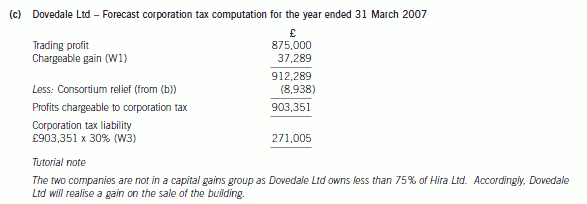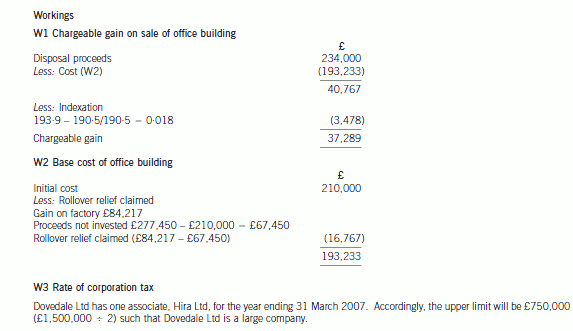贵州省2021年ACCA考试报名时间
发布时间:2021-01-13
今天51题库考试学习网为各位贵州考生带来2021年ACCA考试报名时间的相关信息,各位考生请仔细阅读!
2021年3月ACCA所有报名时间如下:
提前报名时间:2020年11月16日(目前已截止)
常规报名截止时间:2021年02月01日
后期报名截止时间:2021年02月08日
2021年6月ACCA所有报名时间如下:
提前报名时间:2020年11月10日(目前已截止)
常规报名截止时间:2021年04月26日
后期报名截止时间:2021年5月3日
ACCA考试报名条件如下所示:
1)凡具有教育部承认的大专以上学历,即可报名成为ACCA的正式学员;
2)教育部认可的高等院校在校生,顺利完成大一的课程考试,即可报名成为ACCA的正式学员;
3)未符合1、2项报名资格的16周岁以上的申请者,也可以先申请参加FIA(Foundations in Accountancy)基础财务资格考试。在完成基础商业会计(FAB)、基础管理会计(FMA)、基础财务会计(FFA)3门课程,并完成ACCA基础职业模块,可获得ACCA商业会计师资格证书(Diploma in Accounting and Business),资格证书后可豁免ACCAF1-F3三门课程的考试,直接进入技能课程的考试。
注册报名ACCA所需材料如下所示:
(一)在校学生所需准备的ACCA注册材料
1. 中英文在校证明(原件)
2. 中英文成绩单(可复印加盖所在学校或学校教务部门公章)
3. 中英文个人身份证件或护照(复印件加盖所在学校或学校教务部门公章)
4. 2寸彩色护照用证件照一张
5. 用于支付注册费用的国际双币信用卡或国际汇票(推荐使用Visa)
(二)非在校学生所需准备的注册资料(符合学历要求)
1. 中英文个人身份证件或护照(复印件加盖第三方章)
2. 中英文学历证明(复印件加盖第三方章)
3. 2寸彩色护照用证件照一张
4. 用于支付注册费用的国际双币信用卡或国际汇票(推荐使用Visa)
(三)非在校学生所需准备的注册资料(不符合学历要求-FIA形式)
1. 中英文个人身份证件或护照(复印件加盖第三方章)
2. 2寸彩色护照用证件照一张
3. 用于支付注册费用的国际双币信用卡或国际汇票(推荐使用Visa)
以上就是51题库考试学习网为大家带来的2021年贵州ACCA考试报名时间的全部内容。51题库考试学习网将持续为您更新ACCA考试的相关资讯和复习技巧,祝大家都能够顺利通过考试!
下面小编为大家准备了 ACCA考试 的相关考题,供大家学习参考。
3 You are the manager responsible for the audit of Lamont Co. The company’s principal activity is wholesaling frozen
fish. The draft consolidated financial statements for the year ended 31 March 2007 show revenue of $67·0 million
(2006 – $62·3 million), profit before taxation of $11·9 million (2006 – $14·2 million) and total assets of
$48·0 million (2006 – $36·4 million).
The following issues arising during the final audit have been noted on a schedule of points for your attention:
(a) In early 2007 a chemical leakage from refrigeration units owned by Lamont caused contamination of some of its
property. Lamont has incurred $0·3 million in clean up costs, $0·6 million in modernisation of the units to
prevent future leakage and a $30,000 fine to a regulatory agency. Apart from the fine, which has been expensed,
these costs have been capitalised as improvements. (7 marks)
Required:
For each of the above issues:
(i) comment on the matters that you should consider; and
(ii) state the audit evidence that you should expect to find,
in undertaking your review of the audit working papers and financial statements of Lamont Co for the year ended
31 March 2007.
NOTE: The mark allocation is shown against each of the three issues.
3 LAMONT CO
(a) Chemical leakage
(i) Matters
■ $30,000 fine is very immaterial (just 1/4% profit before tax). This is revenue expenditure and it is correct that it
has been expensed to the income statement.
■ $0·3 million represents 0·6% total assets and 2·5% profit before tax and is not material on its own. $0·6 million
represents 1·2% total assets and 5% profit before tax and is therefore material to the financial statements.
■ The $0·3 million clean-up costs should not have been capitalised as the condition of the property is not improved
as compared with its condition before the leakage occurred. Although not material in isolation this amount should
be adjusted for and expensed, thereby reducing the aggregate of uncorrected misstatements.
■ It may be correct that $0·6 million incurred in modernising the refrigeration units should be capitalised as a major
overhaul (IAS 16 Property, Plant and Equipment). However, any parts scrapped as a result of the modernisation
should be treated as disposals (i.e. written off to the income statement).
■ The carrying amount of the refrigeration units at 31 March 2007, including the $0·6 million for modernisation,
should not exceed recoverable amount (i.e. the higher of value in use and fair value less costs to sell). If it does,
an allowance for the impairment loss arising must be recognised in accordance with IAS 36 Impairment of Assets.
(ii) Audit evidence
■ A breakdown/analysis of costs incurred on the clean-up and modernisation amounting to $0·3 million and
$0·6 million respectively.
■ Agreement of largest amounts to invoices from suppliers/consultants/sub-contractors, etc and settlement thereof
traced from the cash book to the bank statement.
■ Physical inspection of the refrigeration units to confirm their modernisation and that they are in working order. (Do
they contain frozen fish?)
■ Sample of components selected from the non-current asset register traced to the refrigeration units and inspected
to ensure continuing existence.
■ $30,000 penalty notice from the regulatory agency and corresponding cash book payment/payment per the bank
statement.
■ Written management representation that there are no further penalties that should be provided for or disclosed other
than the $30,000 that has been accounted for.
(c) Calculate the expected corporation tax liability of Dovedale Ltd for the year ending 31 March 2007 on the
assumption that all available reliefs are claimed by Dovedale Ltd but that Hira Ltd will not claim any capital
allowances in that year. (4 marks)


(c) Explain the term ‘target costing’ and how it may be applied by GWCC. Briefly discuss any potential
limitations in its application. (8 marks)
(c) Target costing should be viewed as an integral part of a strategic profit management system. The initial consideration in target
costing is the determination of an estimate of the selling price for a new product which will enable a firm to capture its required
share of the market. In this particular example, Superstores plc, which on the face of it looks a powerful commercial
organisation, wishes to apply a 35% mark-up on the purchase price of each cake from GWCC. Since Superstores plc has
already decided on a launch price of £20·25 then it follows that the maximum selling price that can be charged by GWCC
is (100/135) x £20·25 which is £15·00.
This is clearly a situation which lends itself to the application of target costing/pricing techniques as in essence GWCC can
see the extent to which they fall short of the required level of return with regard to a contract with Superstores plc which ends
after twelve months. Thus it is necessary to reduce the total costs by £556,029 to this figure in order to achieve the desired
level of profit, having regard to the rate of return required on new capital investment. The deduction of required profit from
the proposed selling price will produce a target price that must be met in order to ensure that the desired rate of return is
obtained. Thus the main theme that underpins target costing can be seen to be ‘what should a product cost in order to achieve
the desired level of return’.
Target costing will necessitate comparison of current estimated cost levels against the target level which must be achieved if
the desired levels of profitability, and hence return on investment, are to be achieved. Thus where a gap exists between the
current estimated cost levels and the target cost, it is essential that this gap be closed.
The Directors of GWCC plc should be aware of the fact that it is far easier to ‘design out’ cost during the pre-production phase
than to ‘control out’ cost during the production phase. Thus cost reduction at this stage of a product’s life cycle is of critical
significance to business success.
A number of techniques may be employed in order to help in the achievement and maintenance of the desired level of target
cost. Attention should be focussed upon the identification of value added and non-value added activities with the aim of the
elimination of the latter. The product should be developed in an atmosphere of ‘continuous improvement’. In this regard, total
quality techniques such as the use of Quality circles may be used in attempting to find ways of achieving reductions in product
cost.
Value engineering techniques can be used to evaluate necessary product features such as the quality of materials used. It is
essential that a collaborative approach is taken by the management of GWCC and that all interested parties such as suppliers
and customers are closely involved in order to engineer product enhancements at reduced cost.
The degree of success that will be achieved by GWCC via the application of target costing principles will be very much
dependent on the extent of ‘flexibility’ in variable costs. Also the accuracy of information gathered by GWCC will assume
critical importance because the use of inaccurate information will produce calculated ‘cost gaps’ which are meaningless and
render the application of target costing principles of little value.
(b) Explain Mintzberg’s five organisational components. (10 marks)
(b) The strategic apex is the highest level of the organisation and is therefore the highest level of management. This part ensures that the organisation’s mission is followed and manages the relationship with the environment.
The operating core is the part that represents the productive activity of the organisation, gathering inputs and, through conversion, turns them into outputs.
The middle line represents that part of the organisation where the middle managers operate. The role of this part is to turn the instructions of the strategic apex into activities for the operating core.
The technostructure includes the staff who provide a technical or supportive activity but which are not a part of the core activities. This part of the organisation includes the engineering, accounting and human resource departments.
The support staff carry out the ancillary activities that are neither part of the core nor the technostructure. Support staff have no role in the direct activities of the organisation: these activities include catering and public relations.(Students may draw the appropriate diagram)
声明:本文内容由互联网用户自发贡献自行上传,本网站不拥有所有权,未作人工编辑处理,也不承担相关法律责任。如果您发现有涉嫌版权的内容,欢迎发送邮件至:contact@51tk.com 进行举报,并提供相关证据,工作人员会在5个工作日内联系你,一经查实,本站将立刻删除涉嫌侵权内容。
- 2020-04-08
- 2020-01-29
- 2020-01-09
- 2020-01-09
- 2020-01-09
- 2021-02-26
- 2020-02-26
- 2020-09-03
- 2020-01-09
- 2020-09-03
- 2020-01-10
- 2020-01-09
- 2020-08-13
- 2021-05-27
- 2021-04-02
- 2020-01-09
- 2021-04-25
- 2021-01-13
- 2020-01-10
- 2020-01-03
- 2020-01-09
- 2020-03-25
- 2021-01-22
- 2020-02-27
- 2020-01-08
- 2021-01-13
- 2020-02-28
- 2020-01-09
- 2021-06-19
- 2020-01-10